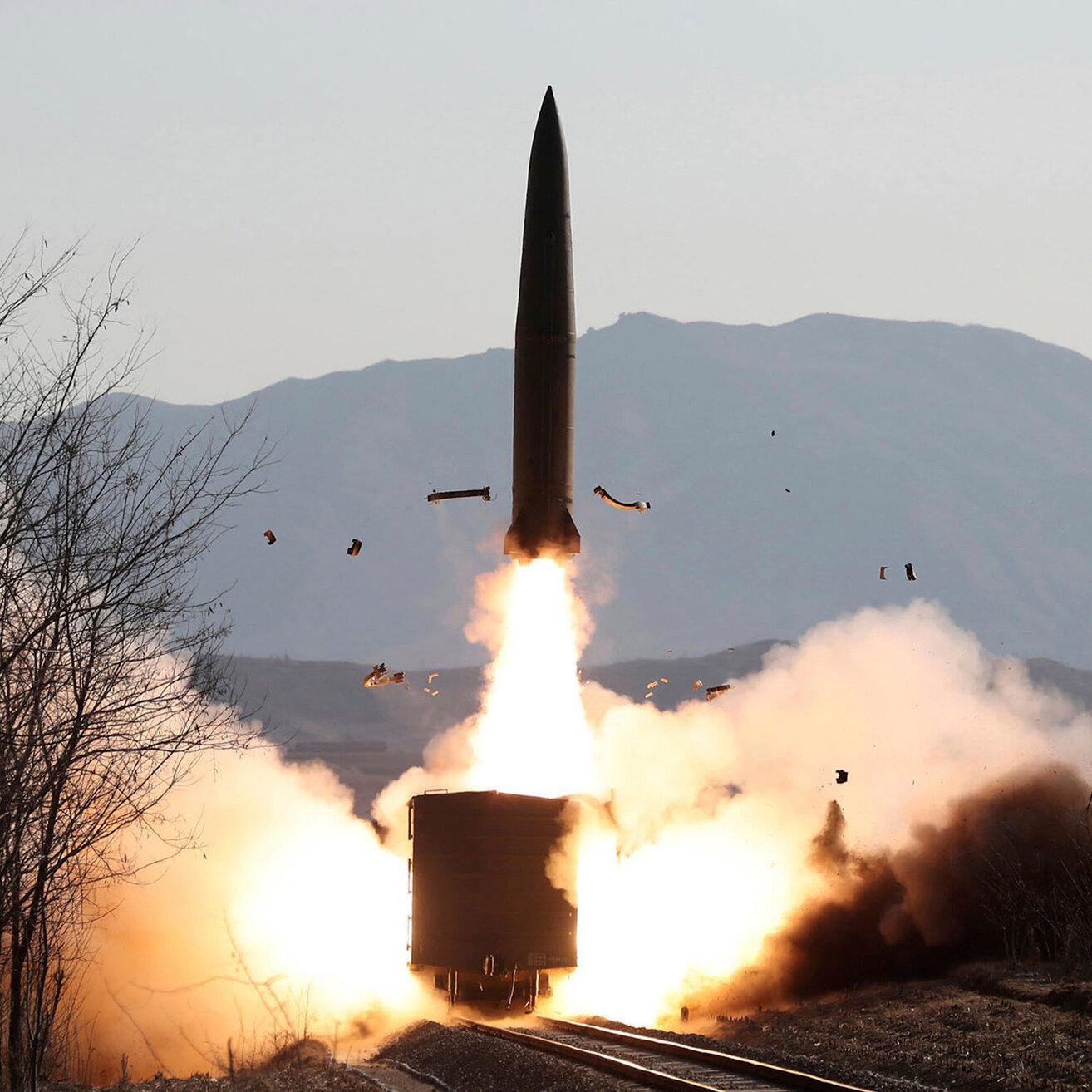The sun rose over the Korean peninsula, its golden rays skimming over the azure waters of the Yellow Sea. But beneath the placid surface, a different story was unfolding. A symphony of fire, not of the celestial kind, erupted as multiple projectiles ripped through the dawn, their trajectories slicing through the sky. North Korea, once again, had sent a message – a message delivered not in words, but in a barrage of metal and flame.
Table of Contents
- A Show of Force: North Koreas Latest Missile Launch
- Escalating Tensions: The Implications of Pyongyangs Missile Barrage
- A Diplomatic Tightrope: Navigating the North Korea Challenge
- The Strategic Context: Understanding North Koreas Military Posturing
- Concluding Remarks

A Show of Force: North Koreas Latest Missile Launch
North Korea has once again ignited regional tensions with a series of short-range ballistic missile launches, sending projectiles towards the Sea of Japan. The launches, which mark a significant escalation in Pyongyang’s military activities, have raised concerns among neighboring countries and international observers. This latest display of force comes amidst ongoing diplomatic stalemate and heightened tensions over the North’s nuclear ambitions. While the specific motives behind the launches remain unclear, experts speculate that they could be a message of defiance aimed at the United States and its regional allies.
Here’s a breakdown of the key points surrounding this latest incident:
- Number of Launches: Multiple short-range ballistic missiles were fired.
- Target Area: The Sea of Japan (also known as the East Sea).
- Possible Motives: A show of force directed towards the US and its allies, a demonstration of military capabilities, or a response to ongoing international pressure.
- Impact: The launches have further strained relations between North Korea and its neighbors, generating international condemnation and fueling anxiety over the region’s stability.
The International Response: The launches have prompted immediate condemnation from South Korea, Japan, and the United States.
| Country | Response |
|---|---|
| South Korea | Strongly condemned the launches, calling them a serious provocation. |
| Japan | Expresssed deep concern and urged North Korea to cease its provocations. |
| United States | Condemned the action and called for North Korea to engage in diplomacy. |
This incident underscores the precarious security situation on the Korean peninsula and the ongoing challenges in denuclearization efforts. The international community faces a delicate balancing act in responding to North Korea’s provocations while seeking a diplomatic resolution.
Escalating Tensions: The Implications of Pyongyangs Missile Barrage
North Korea’s recent flurry of missile launches has sent shockwaves through the region, raising anxieties about a potential escalation in tensions. Pyongyang’s actions, while not entirely unprecedented, are noteworthy for their sheer frequency and the calculated ambiguity surrounding their intended targets and capabilities. These launches are a stark reminder of the volatile nature of the Korean peninsula and the ever-present threat of conflict. While the specifics of North Korea’s motivations remain unclear, experts speculate that the missile tests could be aimed at several objectives, including:
- Demonstrating military prowess: The launches serve as a show of force, showcasing North Korea’s advancement in missile technology and its ability to strike targets within the region.
- Pressuring international negotiations: By ramping up military activities, North Korea may be seeking to leverage its newfound leverage in negotiations with the United States and its allies, aiming for concessions in sanctions relief or diplomatic recognition.
- Testing defense systems: The barrage of missiles could be a calculated exercise to gauge the capabilities of South Korea’s and Japan’s missile defense systems and potentially identify vulnerabilities.
Regardless of the underlying motivations, the implications of North Korea’s latest actions are undeniably significant. The launches have triggered condemnation from neighboring countries and international organizations, with calls for a concerted response to deter further escalation. The situation underscores the complex geopolitical dynamics at play in Northeast Asia and the need for diplomacy and restraint to avert a potentially disastrous conflict.

A Diplomatic Tightrope: Navigating the North Korea Challenge
The recent launch of a barrage of short-range ballistic missiles by North Korea towards the sea adds another layer of complexity to the already fraught diplomatic landscape. This act, a clear display of military capability and defiance, further underscores the delicate tightrope walk that global powers face when engaging with Pyongyang.
The challenges are multifaceted:
- How do we balance the need to deter North Korean aggression with the desire for diplomatic engagement?
- How do we address Pyongyang’s growing nuclear arsenal while preventing an escalation of tensions that could lead to conflict?
- How do we ensure regional stability in the face of North Korea’s unpredictable behavior?
Finding answers to these questions necessitates a careful and nuanced approach, one that prioritizes diplomacy while maintaining a strong deterrent posture.

The Strategic Context: Understanding North Koreas Military Posturing
North Korea’s recent missile launches, while concerning, are not entirely unexpected. This volatile nation has a history of employing military posturing as a tool for leverage in international relations. Their actions often appear to be a response to perceived threats, particularly from the United States and its allies in the region. Understanding this dynamic requires considering various factors at play.
- Domestic Political Landscape: The Kim regime seeks to maintain a strong grip on power, and military displays serve to bolster legitimacy and internal support, particularly amidst economic hardship.
- Regional Security Concerns: North Korea’s missile tests are likely aimed at demonstrating its military capabilities and deterring potential adversaries in the region, particularly South Korea and Japan.
- International Negotiations: North Korea’s military posturing can be seen as a tactic to gain concessions during international negotiations regarding its nuclear program and economic sanctions.
Concluding Remarks
The sea, once a silent witness to history, now echoes with the whispers of steel and fire. North Korea’s latest display of force leaves one pondering a question as old as time itself: will the tide turn, or will the waves continue to crash against the shores of uncertainty? Only time, the great storyteller, holds the answer.

Leave a Reply